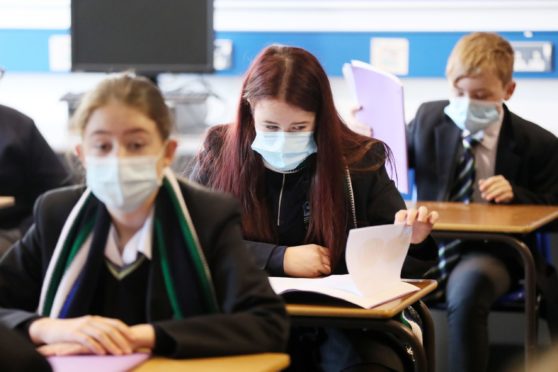A consultant for NHS Grampian has made a series of videos advising parents and carers on how to keep their kids safe as nearly all of them prepare to return to the classroom on Monday.
The Scottish Government has confirmed that all children who haven’t already gone back to school will after the current Easter break, except those who are shielding.
Pupils on the shielding list are being advised to learn from home until the country is moved from Level 4 to Level 3 on April 26.
Students in Aberdeen and Moray are among those who have already made the return, while Aberdeenshire pupils will be back at the start of next week.
Dr Derek Cox, a consultant in public health medicine and NHS Grampian’s clinical lead for contact tracing, appears in the three videos released by the health board to provide more information about Covid symptoms, testing and masks.
In the first video, addressing the symptoms that might mean pupils and teachers should stay out of schools, Dr Cox says people should look out for “headaches, sore throats, mild coughing [and] symptoms of a cold” as well as a high temperature, persistent cough or loss of taste or smell.
He adds: “It just so happens that if someone does have symptoms, and you’ve got a lateral flow test at home, please don’t use this.
“The LFT test is for people who don’t have symptoms, people who are asymptomatic.
“So if anyone in the household gets symptoms, they need to book a proper test through the NHS or the government testing system.”
He also advises people to avoid sharing cars “if at all possible”, and not to stand around the school gates.
The second video in the series looks at the use of masks in schools, with Dr Cox saying they cut down the possibility of people who have the virus passing it on to somebody else.
He says: “Cloth masks will not prevent you from catch the infection from somebody who’s got it, so the only mask that’s going to work that way is a proper fluid-repellent surgical face mask.”
Dr Cox also stresses the importance of washing your hands before putting on the mask, and of making sure not to touch the mask once it’s on.
In the final video in the short series, Dr Cox explains how the testing system works in schools, saying all teachers and all secondary school pupils are offered lateral flow tests twice a week.
He emphasises that it is very important to look at the instructions, and to read the results of the test at exactly 30 minutes to ensure it is as accurate as possible.
More videos from NHS Grampian can be found on their Youtube channel here.
